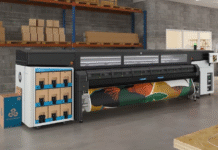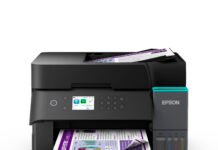Stratasys has unveiled a new polymer FDM 3D printer, the F3300, which has been designed for production-scale additive manufacturing. As such, it will be suitable for producing production parts, prototyping and tooling.
The Fused Deposition Modelling or FDM, which is also known as Fused Filament Fabrication or FMM, is Stratasys’ original and patented 3D printing technology. The idea is relatively simple, with the material, in the form of a plastic filament, being fed to the extruder. At this point, it is heated and then deposited where needed to build up the part one layer at a time. There’s a wide range of materials available, with different properties such as thermal or chemical resistance, high strength-to-weight ratio, and so on.
The FDM approach is widely used in desktop 3D printers but in recent years several manufacturers, including Stratasys, have introduced large industrial-scale FDM machines that have moved increasingly closer to the dream of using 3D printing to produce end-use parts.
Stratasys says that it has redesigned many of the sub-systems to make the F3300 more efficient and claims that it will lower cost-per-part by up to 25%, print up to two times faster than any other FDM printers for production, and have 25% increased accuracy. Stratasys did not list the print speed in its specifications though it is said to be 2-3 times faster than Stratasys’ existing F900 industrial FDM machine.
The F3300 has a build volume of 600 x 600 x 800mm. The chamber includes dryers to control the humidity within the chamber, which is crucial to optimize the properties of the materials in use. This can be tailored to the needs of each material.
It has newly designed extruders, that are said to be twice as fast as the previous generation. There are four extruders, which give the option to print multiple colors as well as support material. It is possible to fit different nozzles to each extruder in order to produce different resolutions within the same print job. There’s a tool changer to automatically swap out tools as needed. Having multiple extruders also allows for faster print speeds, and gives a degree of redundancy since a print head can be parked to one side if it becomes blocked.
It uses linear motors and encoders to move the extruder heads, which should be faster and more accurate than mechanical systems. It uses a dual-axis approach so that the extrusion heads and the Z-stage move independently of each other.
It can hold up to four material spools, and these can each hold up to 4100cc of material, which should make for long printing times without needing any operator attention. And, of course, bulk spools should also lead to lower material costs.
It will take a range of materials, including ASA thermoplastic, polycarbonate, FDM Nylon 12CF and Ultem 9085 resin. The resolution varies according to the material, from 0.18mm to 0.50mm.
The F3300 also features two cameras and multiple sensors to monitor its status and the parts being produced. It has a 15.6-inch screen and comes with Stratasys’ GrabCAD print software.
Rich Garrity, Stratasys Chief Industrial Business Unit officer, commented: “Rising global supply chain challenges, conventional capacity limitations, and application complexity are placing incredible stress on manufacturing. The F3300 will empower customers to accelerate product development, allowing them to innovate faster, overcome production challenges, be quicker to market, and maximize their return on investment.”
The Japanese car maker Toyota will become the first customer to install the F3300. Toyota will use it for new production support, including parts and fixtures, and also for prototyping applications, to help bring new products to the market faster.
Eduardo Guzman, Advanced Technologies manager for Toyota, noted: “Having the opportunity to incorporate the F3300 3D printer into our Additive operations represents a great leap forward towards achieving our corporate goals.” He added: “The new printer capabilities will help us accelerate the introduction of new additive manufacturing opportunities across our manufacturing operations.”
The F3300 should be available from the start of 2024. Further details are available on the F3300 from stratasys.com.
This story was first published on www.nessancleary.co.uk on 13 November 2023. Republished with permission.


















